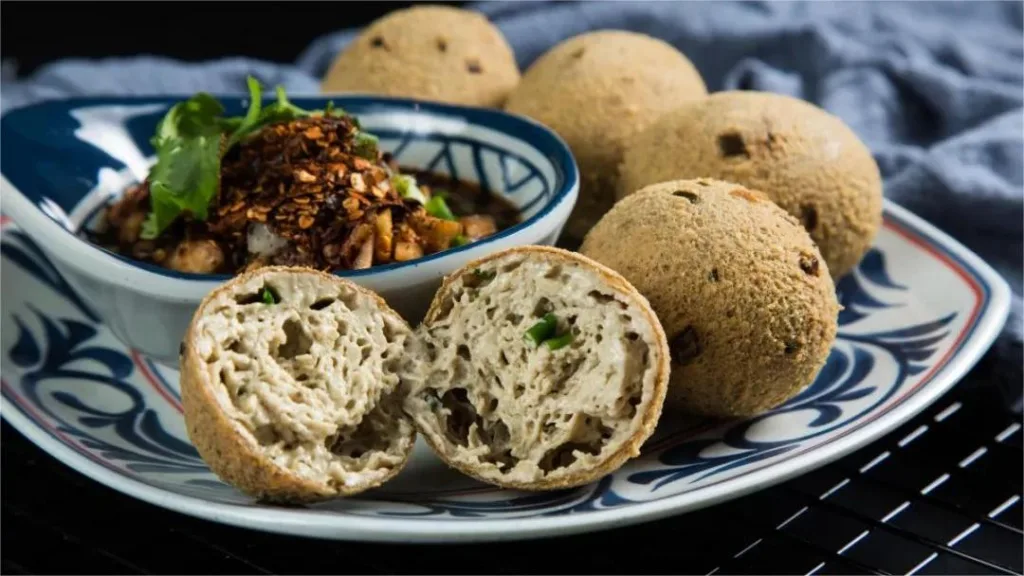Tofu Yuanzi (Tofubällchen) - eine traditionelle Delikatesse in Guiyang


Doufu yuanzi (豆腐圆子), also known as Tofu Balls, is a traditional delicacy originating from Guiyang, the capital city of Guizhou Province, China. It is primarily made from tofu and prepared through deep-frying, resulting in a crispy golden exterior and a soft, smooth tofu filling inside.
The invention of doufu yuanzi can be traced back to 1874 during the Qing Dynasty, specifically during the 13th year of the Tongzhi Emperor’s reign. Following the death of the Tongzhi Emperor, the imperial court issued a decree nationwide to observe a three-day prohibition on slaughtering animals, known as “Jin Tu” (forbidding meat consumption). This decree applied to both officials and commoners alike, including the residents of Guiyang, situated in the southwestern border region.
With the prohibition on meat consumption, tofu workshops experienced a surge in business. Recognizing this as an opportunity for expansion, a couple named Lei Duanzao and his wife, known as “Madam Lei San,” who were natives of Guiyang and ran a tofu workshop, devised a plan. Since meat-filled dumplings were prohibited, they decided to make dumplings using tofu instead.
They experimented with adding salt, alkali, spices, and chopped green onions to the tofu mixture, shaping it into small walnut-sized balls, and deep-frying them in vegetable oil until golden brown. To their surprise, these fried tofu balls became immensely popular among the locals in Guiyang.
The astute Madam Lei San efficiently managed the production and operations, and their business flourished. It was during this time that “Lei’s Tofu Balls” became renowned throughout Guiyang and beyond as a beloved snack.
The enduring popularity of doufu yuanzi can be attributed to its delicious taste, crispy texture, and the ingenuity of its invention during a time of dietary restrictions. Today, doufu yuanzi continues to be enjoyed by locals and visitors alike, serving as a cherished symbol of Guiyang’s culinary heritage.